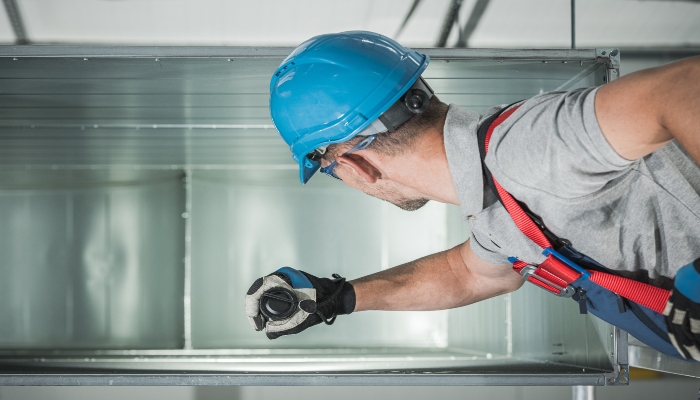When it comes to safety in industrial settings, the significance of inspecting confined spaces cannot be overstated. Confined spaces present unique challenges and potential risks that demand meticulous inspection and careful management. Let’s explore the complexities of inspecting confined spaces, exploring the characteristics of confined spaces, the risks they pose, and the crucial role of inspection software in enhancing safety protocols.
Understanding Confined Spaces
A confined space is more than just a small enclosure; it possesses specific characteristics that can make it hazardous for workers:
Limited Entry and Exit Points: Confined spaces often have restricted openings for entry and exit, which can hinder escape in case of an emergency.Unfavorable Natural Ventilation: Poor ventilation in confined spaces can lead to the accumulation of hazardous gases or fumes.
Not Designed for Continuous Occupancy: Confined spaces are not intended for continuous worker occupancy, which can exacerbate the risks associated with prolonged exposure.
Enhancing Inspection with Software Solutions
Inspectors play a crucial role in assessing confined spaces for potential defects. These inspections involve uncovering issues that could compromise the safety of workers. The information gathered during inspections informs maintenance decisions, such as whether the confined space requires repair, replacement, or ongoing monitoring.
Inspection software has emerged as a valuable tool in ensuring the safety of confined spaces. The versatility of inspection software, particularly when it can be configured to suit the specifics of a confined space, is a game-changer. This software facilitates efficient inspections, tracks crucial data, and generates comprehensive reports.
Software solutions like The Checker empower inspectors to:
- - Conduct specific, tailored inspections for different types of confined spaces.
- - Track and document findings, ensuring accountability and transparency.
- - Generate comprehensive reports that can inform decision-making and future safety measures.
Remote Visual Tools for Risk Reduction
In industries where safety and risk reduction are paramount, remote visual tools are indispensable. These tools allow inspectors to assess and detect deficiencies in confined spaces that may be difficult to access physically. The recorded findings are seamlessly integrated with inspection software like The Checker, further enhancing the accuracy and efficiency of the inspection process.
Understanding the Risks of Confined Spaces
Confined spaces can pose a range of risks, including:
- Fire or Explosion: Confined spaces have a high risk of fire or explosion due to limited ventilation.
- Asphyxiation: The presence of hazardous gases, fumes, or a lack of oxygen can lead to loss of consciousness from asphyxiation.
- Drowning: Water accumulation in confined spaces can lead to drowning or an increase in water level.
- Temperature-Related Issues: Limited ventilation can result in a dangerous increase in body temperature.
- Engulfment or Entrapment: Free-flowing solids or entrapment can lead to asphyxiation or suffocation.
The Complexity of Confined Space Inspections
Inspections within confined spaces demand meticulous planning, specialized skills, and appropriate equipment. Regardless of the purpose of the inspection, whether for maintenance or safety assessment, confined space inspections require additional considerations, labor, and time due to the challenges associated with accessing or dismantling these systems.
Essential Steps for Confined Space Inspections
- Assessment: Determine whether the area qualifies as a confined space based on its characteristics.
- Equipment Inspection: Inspect machinery, equipment, tools, and personal protective equipment before use.
- Respiratory Equipment Testing: Test all respiratory equipment before each use to ensure its functionality.
Conclusion
Inspecting confined spaces is a task that demands heightened attention to detail, specialized skills, and robust safety protocols. The risks posed by these spaces necessitate thorough assessments and the use of technology to enhance efficiency and accuracy. From fire hazards to asphyxiation risks, the dangers within confined spaces are multifaceted. With meticulous inspections, advanced inspection software, and the integration of remote visual tools, industries can minimize these risks and create safer working environments for all.











